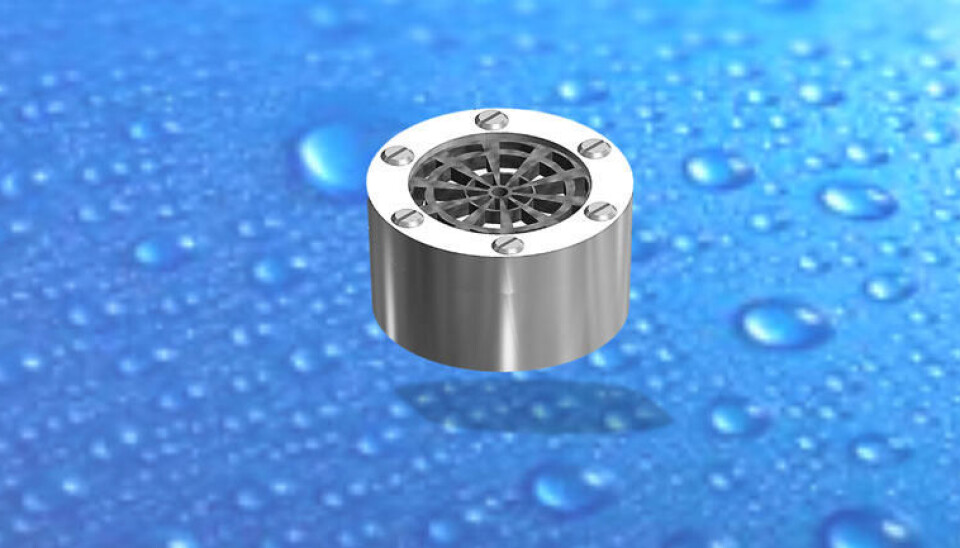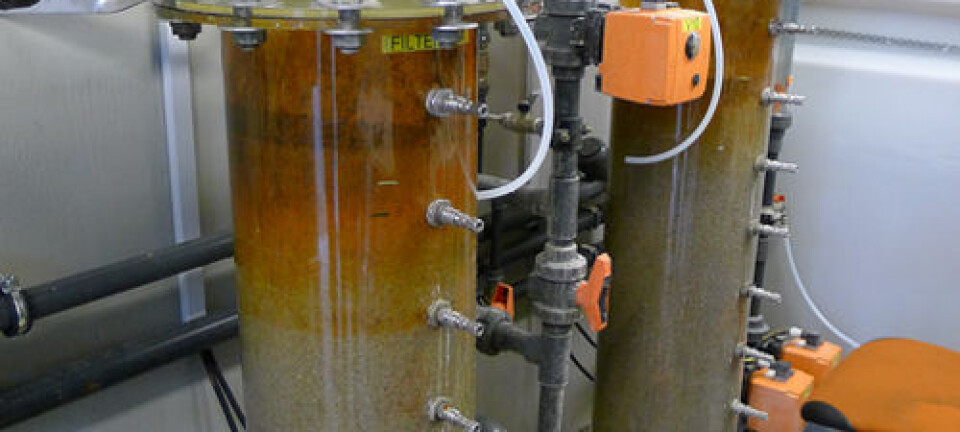This article was produced and financed by University of Southeast Norway

This sensor detects when you need a glass of water
A newly developed micro-sensor can detect dehydration, and can alert the user. In particular, this aid can be extremely useful in the care of the elderly.
When you notice that you are thirsty, it is your body that says that you have lost two percent liquid. It may not sound very dramatic, but your performance capability has already fallen by thirty percent. It takes that little before your performance decreases, both physically and mentally.
For your body to function optimally, a good fluid balance is vital.
A legacy from when we lived in the sea
“Life originated in the sea, and the salt concentration in the body is a legacy from the time humans lived in the sea”, says Professor Erik Andrew Johannessen at the Department of Microsystems at University College of Southeast Norway. He has been one of the supervisors for Luis André L. Fernandes, who recently defended his thesis on micro sensor technology for the measurement of body fluid.
“Most of us are a little dehydrated all the time, and coffee promotes the dehydration. Therefore, you should always carry a glass of water and drink a little all the time.”
Dehydration can get serious
When a deviation in fluid balance happens, the body begins to protest, and the first thing you notice is that you are thirsty. For a healthy person is not serious. Most of us drink when we are thirsty. But for some people the situation can become serious. For example we can imagine older people who do not notice that they need fluids.
Some professions, such as firefighters, soldiers and athletes also end up in situations where they risk being seriously dehydrated. With a micro sensor in the skin, they can get an alert before the situation becomes serious.
This is how it works:
The sensor contains a fluid filled pressure chamber with a constant salt concentration, which communicates with the water and salt on the outside through a membrane.
When we lose fluid, water disappears while the salts remain. This leads to an increase in the salt concentration on the outside. This starts a process to draw water out of the pressure chamber on the sensor.
This process is known as osmosis. This results in a pressure drop inside the sensor, which can be reconciled with the salt concentration outside the sensor. The opposite happens when we drink liquid. The salt concentration on the outside of the sensor falls, and the salt inside the pressure chamber ensures that the water flows again and the pressure increases.
This chemical process creates pressure inside the sensor, and this pressure is a direct result of the fluid balance in the body.
Today fluid balance is measured through sampling, skin analysis and weight measurement. The new sensor is only 16 millimeters in diameter and 8 millimeters high, but contains everything needed to measure fluid balance in the body.
“This sensor can be placed in the subcutaneous. Our bodies consist of 60% liquid and most of the water is in and between cells. If you weigh 70 kg, there are four liters of pure blood. The remainder is body fluids that can be measured”, says Professor Johannessen.
“Has been very exciting”
Dr. Luis André L. Fernandes has a background in biosensors, and took a master at developing systems for medical therapy in collaboration with the Royal Brompton Hospital in London.
“This gave me an excellent start to the doctoral work, and it has been very exciting to be working with this interdisciplinary project”, says Dr. Fernandes.
The project combines separation processes in membrane technology with micro-electronics and packaging technology. He is very pleased with the results showing that it is possible to measure the salt concentration in a liquid.
May be important for elderly-care
“This is one of several examples of technologies that can be important for the elderly living at home. Different types of sensors can help alert when people are not in shape. The challenge is that it can be a complicated road ahead until this technology can be used on humans. There are numerous tests and approvals that must be in place before we get that far”, says Professor Yngvar Berg, director of the Institute for microsystems at USN.
































